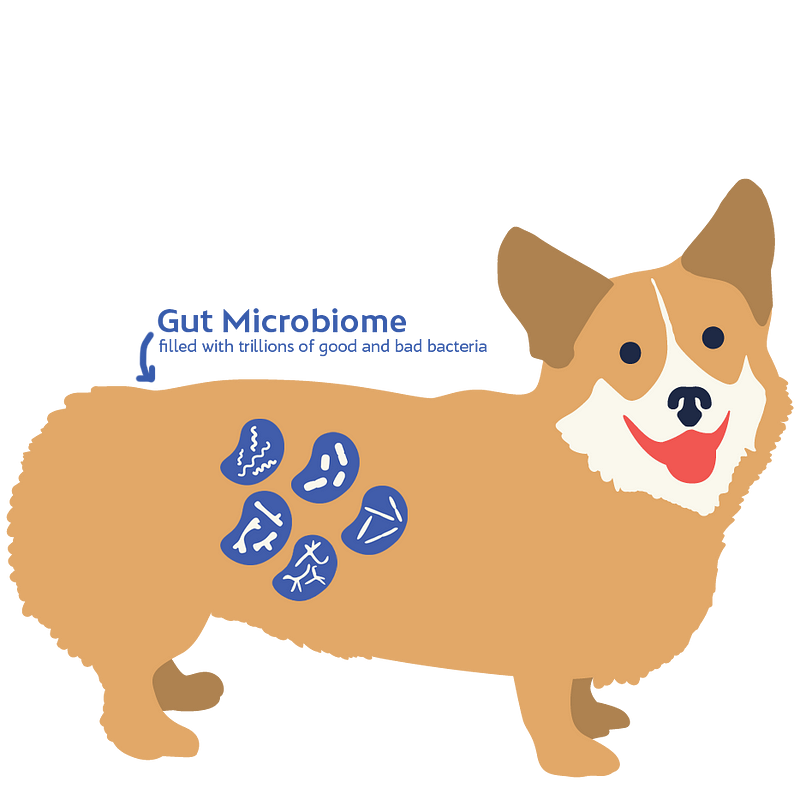# Understanding the Microbiome: Insights into Canine Health
Written on
Chapter 1: What Exactly is the Microbiome?
In our first article, we shared intriguing insights regarding the microbiomes of dogs. But let’s clarify what the term "microbiome" really means. It might ring a bell for some, as it often comes up in scientific discussions, sometimes referred to as microflora—though this term only scratches the surface of the extraordinary components that constitute microbiomes!
Essentially, the microbiome describes the diverse ecosystem of bacteria and other microorganisms that inhabit an animal, both externally and internally. An individual animal can host numerous microbiomes, including those found in the gut, skin, and oral cavity. Both humans and dogs are home to these intricate communities! The microbiome is a highly intricate system and remains a focal point for both ongoing and emerging scientific inquiries.
At BarkBiome, we are dedicated to enhancing our comprehension of the gut microbiome in dogs, given its crucial role in their overall health. Trillions of bacteria and microorganisms thrive along the digestive tract, executing metabolic functions such as nutrient production, while also being associated with behaviors like anxiety and aggression. It’s important to note that each dog's gut microbiome is uniquely shaped by various factors including diet, genetics, age, antibiotics, exercise, and environmental hygiene.

Chapter 2: The Gut: A Hub of Microbial Activity
The gut, particularly the intestines, holds the highest concentration of bacteria, performing crucial digestive functions. These microorganisms can have either beneficial or harmful effects (as balance is key in nature). Probiotics, the beneficial bacteria, play a vital role in breaking down macronutrients such as protein and fiber, as well as in the absorption and production of essential vitamins. Considering that dogs typically digest food much faster than humans (approximately 6–8 hours compared to 20–30 hours), having an ample supply of probiotics is critical for optimal nutrient uptake.
Moreover, the microbiome is pivotal in supporting more than 70% of a dog's immune system by carrying out a multitude of essential tasks. For instance, certain bacteria inhibit the growth of harmful pathogens like E. coli and Salmonella, while others maintain a stable environment in the digestive tract to prevent issues such as leaky gut syndrome.
However, the microbiome is not static; it can be negatively affected, leading to significant health consequences. Symptoms linked to an imbalanced microbiome may include food allergies, weight gain, chronic inflammation, mood disorders, diarrhea, constipation, irritable bowel syndrome, and others.
To proactively promote and maintain your dog’s gut health and overall wellbeing, consider these strategies:
- Incorporating fresh foods rich in natural bacteria, such as kefir
- Adding probiotic supplements to your dog’s regimen
- Steering clear of heavily processed diets, like kibble, when feasible (As probiotics are living organisms, they are sensitive to the high heat involved in dry food production, often resulting in their loss before reaching your dog’s bowl.)
In severe cases, some dogs have shown improvement through fecal microbiota transplants (FMT), which involve transferring the gut microbiome from healthy dogs to those in poor health. More details on this topic will be shared soon.
This may seem like a lot to take in! We will return shortly with “What is the Microbiome? (Part II)” filled with additional insights. Feel free to contact us directly or leave a comment if you have any inquiries or simply wish to engage in conversation!
The first video, "THE HUMAN MICROBIOME: A New Frontier in Health," delves into the groundbreaking research surrounding the human microbiome and its implications for health.
The second video, "Our Emerging Understanding of the Gut Microbiome in Health and Disease," explores the evolving knowledge regarding the gut microbiome's role in both health and illness.